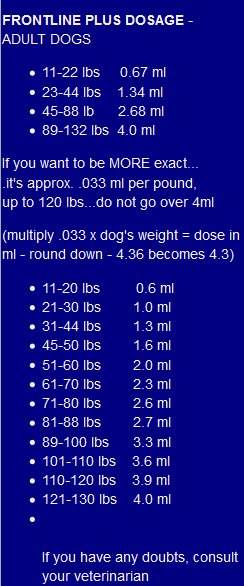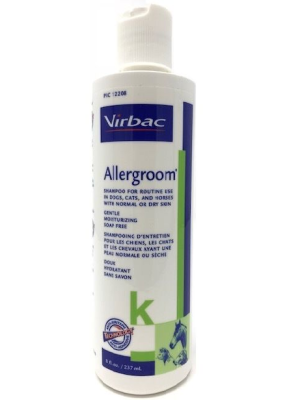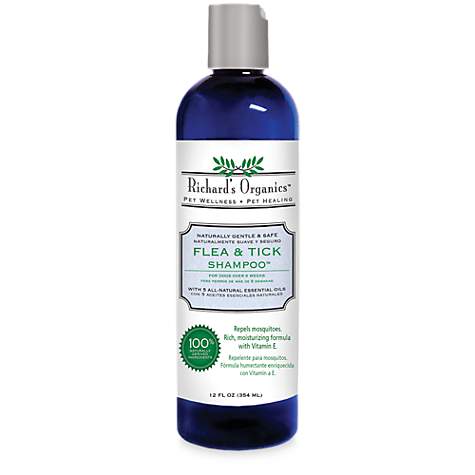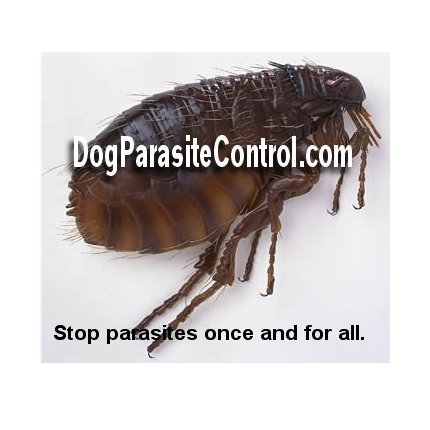Fleas 
Until a recent invasion, we've never had flea problems - even when Holly has caught and killed bunny after bunny in the yard. They must have been particularly bad that year, or one of the dogs picked them up elsewhere and it wasn't noticed until it became more of a problem....at any rate - fleas quickly become a major problem if you don't notice that one or two right away. Fleas prefer temperatures of 65-80 degrees and humidity levels of 75-85% so the weather has been perfect for them lately...
Dogs and cats often get infested with CTENOCEPHALIDES FELIS (the Flea) through contact with other animals or contact with fleas in the environment (or in the case of Malamutes - killing something with fleas such as bunnies, squirrels, rodents). Fleas can jump from host to host or from the environment onto the host and do not fly.
The flea’s bite can cause itching and for a flea-allergic animal. This itching can be quite severe and can lead to hair-loss, inflammation and secondary skin infections which is why it's important to begin treating the Malamute and your house immediately. When you see ONE flea, there are probably others so it's important to look. Some Malamutes, hypersensitive to the flea's saliva, will itch all over from the bite of even a single flea!Unlike the burrowing, microscopic Demodex or Scabies Mites, fleas can be found at the base of the fur near the skin and move quickly to get out of the light. They tend to prefer warmer and less furred areas of the dog, such as the belly, arm and let pits, and neck near the collar. Sometimes if you treat those areas and neglect others, they'll just move to legs or faces. Fleas appear black or very dark brown and are about the size of the head of a pin.
Fleas dislike light so looking for them within furry areas and on the Malamute's belly and inner thighs will provide your best chances of spotting them. Look for "flea dirt", too. "Flea dirt" is really flea poop, and looks like dark specks of pepper scattered on the skin surface. If you see flea dirt, which is actually composed of digested blood, pick some off the Malamute and place on a wet paper towel. If after a few minutes the tiny specks spread out like a small blood stain... it's definitely flea dirt. Once you've seen flea dirt, and confirm it, you'll recognize it when you see it again. Flea dirt may be your only evidence of your Malamute having fleas - but if the dirt is there, so are the fleas.
The flea’s life cycle precludes which treatment and prevention products work best. There are several stages to its life cycle: egg, larva or caterpillar, pupa or cocoon, and adult. The length of time it takes to complete this cycle varies depending upon the environmental conditions such as temperature, humidity, and the availability of a nourishing host. And the various flea stages are quite resistant to freezing temperatures so it's a myth that you can't get fleas in the winter. Many a bunny has been killed in the winter that was infested, and sometimes I think that is when we see them most. The flea's host is a warm-blooded animal such as a dog or cat or even humans - though they prefer animals to humans because humans are lacking something in our blood that allows them to reproduce, even though they will still bite.
Flea-borne Typhus is a problem for humans who have been bitten by fleas. It's easily treatable, but it can kill you if you get it and don't go to the doctor - so fleas are nothing to ignore. The adult female flea typically lives for several weeks on the Malamute. During this time period she will suck the animal’s blood two to three times and lay twenty to thirty eggs each day. She'll lay several hundred eggs over her life span. These eggs fall off of the Malamute into the yard, bedding, carpet, and wherever else the animal spends time.
These eggs then proceed to develop where they have landed. Since they are microscopic - about 1/2th of the adult, they can even develop in small cracks in the floor and between crevices in carpeting. The egg then hatches into larvae. These tiny worm-like larvae live among the carpet fibers, in cracks of the floor, and outside in the environment. They feed on organic matter, skin scales, and even the blood-rich adult flea feces. The larvae grow, molt twice and then form a cocoon and pupate, waiting for the right time to hatch into an adult. These pupae are very resilient and are protected by their cocoon.
Pupae can survive quite a long time, waiting until environmental conditions and host availability are just right. Then they emerge from their cocoons when they detect heat, vibrations and exhaled carbon dioxide, all of which indicate that a host is nearby. The newly emerged adult flea can jump onto a nearby host immediately. The flea can complete its entire life cycle in just fourteen days. That's a LOT of fleas!
Fleas are not just an annoyance. They can also cause serious health problems for your Malamute, including anemia, tapeworms, and allergic dermatitis. You can use a number of techniques to get rid of dog fleas - first, try to get them off the dog. Flea baths, shampoos, and flea dips will accomplish this. Also rely on regular grooming - it will keep a good chunk of the dog fleas off of your animal. If your dog is pregnant, I've been told by the vet it is ok to treat with "natural" products and that "Frontline" is safe. It's not like you have much choice, left alone, it will be out of control in no time so look for natural products that are safe on puppies and kittens if you have a pregnant dog in the house.
Treating the house
You can't get rid of fleas by just treating the dog(s). You need to treat the house. Wherever your Malamute sleeps is always going to be covered in fleas - it will have adults, and likely flea eggs as well (they fall off the dog or cat as it moves around). carpets and any furniture, drapes or crevasses will also be filled with fleas - they can dig in there, and eggs easily get buried in the fibers or cracks.
If you believe you got them outside, treat the yard. Often this is where it starts - as the eggs hatch that have fallen off wild animals (those pesky bunnies, squirrels, etc.) they will jump on to your dog - so you must be always vigilant to the possibility of fleas. I am not a big fan of Frontline or Advantage, mainly because they tend to only kill the flea eggs or larvae and not the adults - it helps but is not your only line of defense. You will need to use insecticides to truly remove the problem.
Vacuum every day - more often if you have more than a couple of dogs. You can pick up a number of fleas and their eggs this way. Make sure you put something in the vacuum bag to kill off the adults (flea collar works well), otherwise they'll just get out again. Moth balls work. Simply sprinkling some flea powder on your Malamute will not work; simply vacuuming the home vigorously will not work, simply placing a flea collar on your Malamute will not work. You have to attack from many fronts - start with the dog, but also treat where the dog goes - if that's your bed - wash the bedding and spray the room. If that's your living room - spray the couch, carpet and under tables and especially places the dog hangs out.
You may have to reapply the spray every 3 or so days as well. Sprinkle Diatomaceous Earth or Borax in woodwork and cracks. Read the spray bottle for any insecticides and note how long it stays effective and then plan to retreat at least once, possibly more. While there are products that treat one life cycle of the flea such as Program, it's important to attack on many fronts - just be careful not to overdose your dog or yourself by having good ventilation in any room you treat. Program is given orally once per month for dogs and cats, or by injection every six months for cats.
The adult flea is not harmed but the eggs she lays will not hatch, thus breaking the life cycle of the flea. Without reproduction the flea population eventually dissipates as long as the Malamute isn't coming in contact with new fleas or eggs. One product line I do not recommend is Hartz Mountain ...there have been some bad things in the news about their flea products, and I know dogs that have gotten sick from them, so personally, I avoid them. Use what your veterinarian recommends. The new deFlea products are safe and very effective. Other good brands are Adams, Biospot and X-trol which I've personally used and like.
If your dog is allergic to fleas, you'll want to use a soothing shampoo to stop the itching. An oatmeal shampoo works well and is quite soothing.
Malamutes and Fleas
In my experience, Malamutes are not good flea magnets. Or maybe it's our soil, being clay instead of sandy. I understand fleas are more of a problem in sandy soil areas than clay soil - perhaps they reproduce better in that environment. Malamute coats are generally so thick, fleas seem to prefer other animals. When we've had problems, it's the dogs with the lighter coats that seem to be bothered most. The inner legs seem to be the area most irritated, next being the belly/armpits, the neck, and base of the tail....though they can be anywhere, these are the places to look first for flea dirt on a Malamute. Often if it's a bunny kill you're worried about, the fleas will first hang out on the dog's faces (and are easy to see against the white and pick off) before they move on to a more hospitable area - if you check the dog IMMEDIATELY....When picked off, hold tight - because they will jump! I immediately pinch it between fingers, avoid the need to "look" and take and rinse it under running water in the sink to drown it. We've avoided excessive chemicals, Frontline and flea infestations for years this way.
Specific Flea Control Products:
There are a ton of different medicines, drops, sprays, or whatever that you can get to put on your Malamute. Most of these last for a few months, but there are a lot of differences between the various brands. You'll generally want to think about: how long you need it to work, if you need it to kill both fleas and ticks, any bathing restrictions, age restrictions (many can't be used on kittens or puppies), and effectiveness. How to tell if your Frontline is real and not a potentially dangerous FAKE.
- Frontline
- Advantage
- K-9 Advantix
- Capstar
- Program
- Promeris
- Revolution
- Biospot
- Sentinel
Below are some traditional methods of killing fleas. I'm sure you've heard of most of them and some are relatively new. Usually you can't just use one of these alone. Simply because it either won't kill the eggs or won't keep new adult fleas off your Malamute.
- Flea Collars -These can be dangerous and don't kill fleas where they live - bellies and armpits.
- Flea Combs - good for picking off a few fleas, and finding fleas, but like taking a slingshot to a war
- Flea Dip - work well, but don't use on a pregnant bitch or sick/debilitated dog
- Flea Bombs and Foggers- nuke your house, but beware of this getting into food pantries and water bowls
- Flea Powder - works well if it's not a serious infestation and you and your dog are breathing the powder
- Flea Baths and Shampoo- better, but you still have to treat the house
- Diatomaceous Earth - A special kind of soil made from crushed-up algae fossils dust around your yard and will kill fleas by dehydrating them with tiny cuts.
- Nematodes - Millions of little microscopic worms that you spread around the yard to naturally kill fleas.
- Boric Acid for Fleas - A powder for fleas that you use on your carpet and floors. It is a traditional "home remedy" for flea problems.
- Flea Traps - Flea traps are an environmentally safe way to catch fleas using small heat lamps and a glue pad inside. But it does nothing to get rid of the eggs.
There is nothing more frustrating than having a flea problem get out of control. As my mom has said, it's not a sin to get them, but it is to keep them...which is so true! Anyone can get fleas on their Malamute - but you shouldn't have Malamutes if you don't have the means and desire to work at getting rid of the pests. For your health as well as your Malamute.
Homeopathic remedies
Dawn dish soap works great as a flea dip, even for very young puppies. Also Equate Head Lice Shampoo at Walmart works good as a flea shampoo for older and large dogs. Diatomaceous Earth (food grade) is great for killing fleas in the home and it's completely safe if ingested. I've also used it as a dusting powder on the dogs (make sure to keep it out of noses and eyes as it's irritating!).
Being able to treat your Malamute for ticks naturally is important if you want to protect their health and that of the planet. These natural, homemade tick repellents and prevention techniques are things you can do at home simply and easily. These tips will make it possible to prevent and repel ticks naturally, without the use of harmful pesticides. Essential oils are also good in repelling fleas and ticks. Below are a few recipes using them:
- Tea tree oil treatment: Mix two ounces of the oil with water in a 2:1 ratio and pour into a spray bottle. Use to coat your Malamute’s fur and then massage into their skin. This is an astringent and will help to disinfect your Malamute’s skin while repelling ticks as well.
- Neem oil massage: Apply a few drops to your hands and massage into your Malamute’s fur as a repellent for ticks.
- Herbal tick collar: Make your own tick collar by taking an average collar and adding some drops of essential oil mixed with 2 tablespoons of almond oil (use dilute solutions when applying to cats as they can be very sensitive to essential oils). Some great tick-repelling options include rose geranium (the most effective), cinnamon, rosemary, wormwood, clove, peppermint, pennyroyal (don’t use this if your Malamutes or humans in the home are pregnant), and cedar.
- Tick shampoo: Combine 6-10 drops of essential oil (see list above) with two ounces of organic, biodegradable, mild shampoo or soap. Use this to shampoo your Malamute (don’t forget hard-to-reach areas like their armpits, between toes, and under tails) and let the shampoo sit on their fur for five to ten minutes. Then rinse thoroughly to avoid skin irritation. Repeat daily until the problem leaves.
- Herbal repellents: Mix equal parts of rosemary, wormwood, southernwood, tansy, pennyroyal (don’t use this if your Malamutes or humans in the home are pregnant), eucalyptus, or lavender herbs (four from this list will do) and add boiling water to activate the oils. Or, use essential oils of these herbs instead of dried versions. Steep and cool and then use as a wash on your Malamute’s fur. Allow to air dry and reapply every two to three days until the pest problem is gone.
- Chrysanthemum rinse: Grind together dried pyrethrum flowers (chrysanthemum) with equal parts of some of the herbs above and apply the powder liberally to your Malamute’s fur, rubbing in so that it gets to the skin. Recommended for dogs but is toxic to cats.
- Citrus: Make your pet’s fur uninhabitable by rubbing it with a small amount of fresh lemon or orange juice. Use the rinds of recently juiced oranges and lemons...now you have a use for them.
- Brewer’s Yeast: A dose of brewer's yeast mixed with a small amount of garlic in dry food daily will help to repel fleas for dogs. Garlic is not particularly good for dogs so keep the amount tiny.
- Drown Fleas in soapy water
Fleas aren’t so grabby when drowning in water. . Dip your pet in a tub of water and rinse as well as you can. A gentle shampoo (or Dawn dish detergent works best) can help as well. The fleas will slip down the drain. - Vacuum often to suck up flea eggs.
Frequently vacuum your pet’s favorite hang-out spot, launder pet blankets, towels and beds, and keep the floor clean with a natural disinfectant. - Beneficial nematode worms, available at garden shops and pet stores, like to eat flea larva. Keeping them in the garden can help keep outdoor flea populations controlled.
Saving Money on Frontline & Advantage
Flea products can be expensive. And the best flea and tick products are very expensive. If you have multiple Malamutes, it can be prohibitively expensive. You can save money if you have multiple dogs by buying the largest size and then dosing your dog with a syringe using the correct amount for their weight. I have done this and it works well - though you may want to talk to your vet about this because you MUST be accurate or you can poison the dog! (especially small dogs!). For some reason all dosage charts figure dosages in milliliters when all syringes seem to be in cc's. A ml is equal to a cc (which most syringes use). So 4.3ml is the same as 4.3 cc. These dosages are for DOGS ONLY!! Consult another source for cat dosages or if it can even be used on cats.
Another potential benefit of buying the largest size of Advantage or Frontline in bulk is that you can more accurately dose your dogs. By default, Merial categorizes dogs into four broad categories: 0-22 lbs, 23-44 lbs, 45-88 lbs, and 89-132 lbs. This corresponds to vial sizes of 0.67 ml, 1.34 ml, 2.68 ml, and 4.02 ml. That's a pretty big gap between 45 and 88 pounds. Instead using a syringe (with the needle removed) you can empty the largest size (which is the cheapest per pound) into a tiny glass container and draw up an exact dose for each dog into the syringe to apply. Be especially careful of disposal and spillage as these are toxic chemicals. Do not use your kitchen ware! This is how large kennels or big families that need to keep the costs reasonable do it. Be careful with Advantage - my daughter applied some to Cheesecake and she shook - the chemicals in it pitted the plastic on their plasma TV! So apply somewhere this won't happen...(kind of scary isn't it? And we're putting this stuff on our dogs!?)
I personally do not recommend using any flea product year round unless you have a serious flea problem. You usually only need about 3 months of dedicated treatment to wipe out an infestation. There is no point in putting this toxic stuff on our dogs if they don't have fleas!!! Unfortunately, if you have multiple dogs, you will probably have to treat all of them - or they will just pass the fleas back and forth. So treat everyone and the house for three months, and you will likely be rid of the problem (unless they are in your soil or they pick them up somewhere else).
The trick to using these topical flea chemicals properly is to get them on the dogs SKIN - not easy with a thick coated Malamute. Part the hair with a comb and apply to the skin along the line. On a larger dog, you may have to do 2 or 3 parts of the fur.


Young Puppies (under 8 weeks)
Do NOT use these products on young puppies!!! Killing fleas on young puppies is a challenge. One of our worst experiences (I'm glad it's only happened once!) was having caught fleas at a veterinarian's office during a c-section...home the newborns came...with fleas! You can't use any chemicals so plan on spending hours combing and killing fleas manually. The easiest way is to catch them in a flea comb, then drown them in dawn dish soap.
You CAN use Frontline on Mom - which helps. It's safe for nursing or pregnant dogs. One thing I learned too late to help this poor litter was to use Dawn Dish soap as a "flea dip" for young puppies. You can carefully submerge them (head above the water) in tepid water for a few minutes and this will kill fleas. Have someone help you. Make sure you dry them well so they don't get chilled! I would not dip a newborn however, as the risk of being chilled is just too great and there just isn't that much to comb even on a malamute. Puppies can usually tolerate Frontline or similar products at 8 weeks but until then you must comb. Absolutely NO powders and sprays as they are quite toxic to young puppies!












